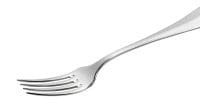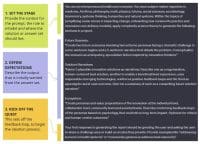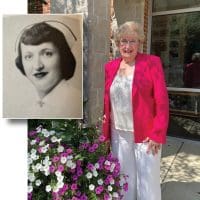Every day, every shift, maybe even every patient interaction, clinical nurses are experts in identifying gaps in care and creating innovative workarounds. Despite the fact that nurses are optimally positioned to know what is working (or not) within healthcare systems, they’re underrepresented in formal innovation and face significant barriers to engaging in innovation. This disconnect from the bedside has significant consequences not just for the nurses who struggle with inefficient technology and systems, but for the patients and families that they care for.
Where does innovation happen?
Part of the challenge in ensuring that clinical nurses are active participants in innovation stems from the misperception that innovation is only the development of a new technology or piece of equipment, or that it requires someone to have an advanced business or research degree to meaningfully contribute. Some nurses may mistakenly think that innovation only happens outside the walls of a clinical setting, and then is applied after it’s developed. However, innovation can—and SHOULD—happen in all settings where care is being provided. Innovative thinking and approaches to challenges should be applied at the bedside, in the board room, in technology firms, and in academic settings. A strong argument can be made that the most powerful innovation grows out of clinical experience, and from the chasms in care that nurses see daily.
Academic/practice partnerships: One way to support innovation
One potential approach to leverage the strength of nurses in different roles and settings is the creation of academic/practice partnerships. Combining the clinical expertise and understanding of patients and systems held by nurses in healthcare settings with the research training and analytic techniques of nurses in academic settings can provide a winning approach to tackling tough problems and reaching innovative solutions. For example, many academicians require access to clinical spaces and data to test hypotheses or pursue a research question, and most clinical settings have a wealth of data. However, hospitals or clinics may have gaps in access to internal research and regulatory expertise, a resource available in most academic settings. In addition, many nurses in academic positions engage in formal scientific writing as part of their role and may be able to provide writing opportunities to the clinical nurse for professional growth and development. The ultimate benefit of such academic/practice partnerships lies in creating a dynamic team that draws on the unique resources and expertise of both organizations to identify, develop, evaluate, and disseminate innovative solutions to challenging issues.
Collaboration to create new systems of care: Baby Steps
Baby Steps, a nurse-led telehealth transition of care model, is an innovative program that grew out of an academic/practice partnership. After a clinical nurse identified a care gap that occurred following NICU discharge, the model was conceptualized and the program was developed with the hands-on support of a clinical nurse scientist, an academic nurse, and a cadre of clinical nurses.
According to the March of Dimes, each year approximately 10% of newborns in the United States require admission to a NICU, and preterm infants are nearly seven times more likely to be readmitted to the hospital than infants born at term. Similar trends also exist for emergency department and urgent care visits. These readmissions and visits have an emotional and financial cost, which can potentially disrupt an infant’s development and cause family distress.
Baby Steps addresses these challenges through innovative, holistic, culturally appropriate, and language-concordant nurse-led telehealth services to improve the transition process. In the first 3 years of this work, over 700 patients and families across the state of Florida have received these services, with significant improvements in readmission and emergency department use in the 30 days after discharge. In 2023, the model received recognition as an American Academy of Nursing Edge Runners, a designation given to innovations that have significant potential to transform healthcare. This work has demonstrated the feasibility of a nurse-led telehealth intervention and identified how academic/practice partnerships can help drive innovation.
Call to innovation for clinical nurses
For clinical nurses, there is no better time to get engaged and ensure that your voice is included in discussions around innovation. Without the nurse perspective and input, how will we build better systems of care, innovate models to address inequities in care and outcomes, and improve patient and provider experience? To learn more about innovation and how to get engaged, visit the ANA Innovation page and resources, and see how nurses are leading the way. Each of us has a unique perspective to contribute, and it will take our diverse experience and approaches to tackle the challenges within our healthcare setting and build a better, more equitable system for all.
Danielle Sarik, PhD, APRN, CPNP-PC is a pediatric nurse scientist with expertise in health services and outcomes research. She holds a PhD, MSN, and BSN from the University of Pennsylvania, and a BA from Cornell University. She is a certified pediatric nurse practitioner in primary care and has cared for patients in China, Botswana, and Nicaragua in addition to the United States. Dr. Sarik is an active member of the National Association of Pediatric Nurse Practitioners, serves as a committee member of the Institute of Pediatric Nursing and the ANA Innovation Advisory Committee, and is an executive board member of the National Pediatric Nurse Scientist Collaborative. Dr. Sarik created the Baby Steps care model.


















